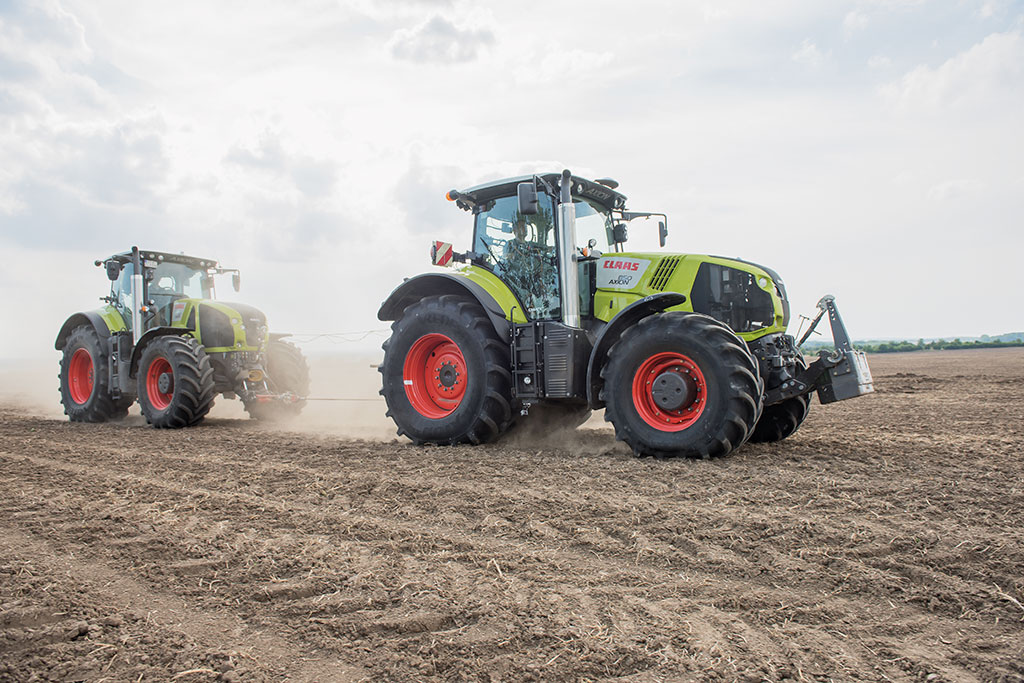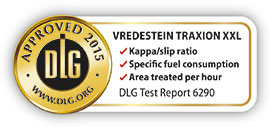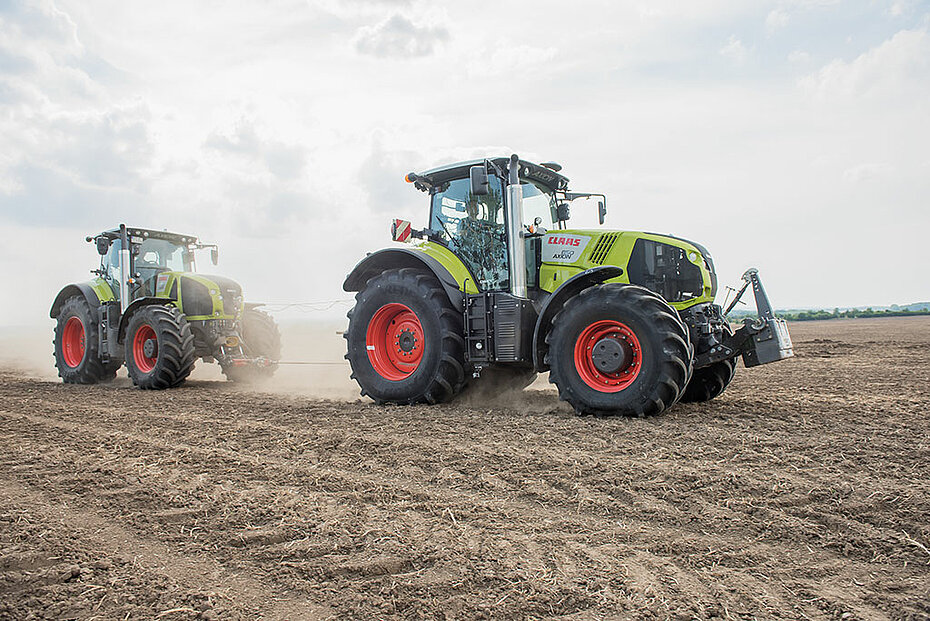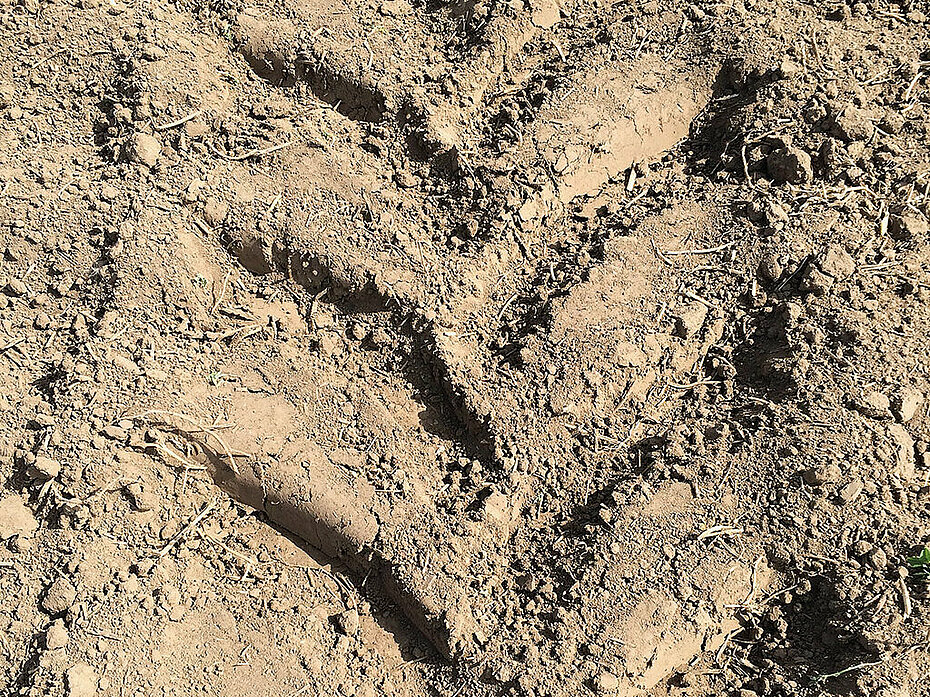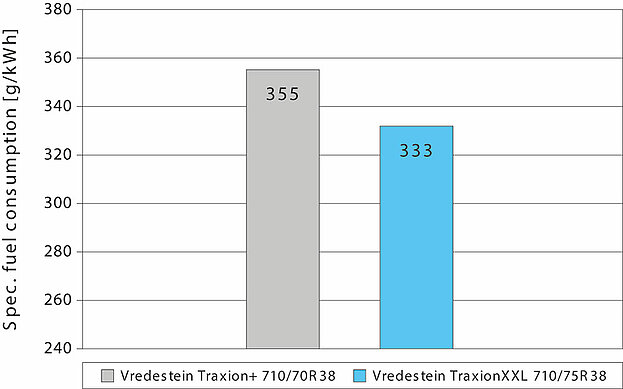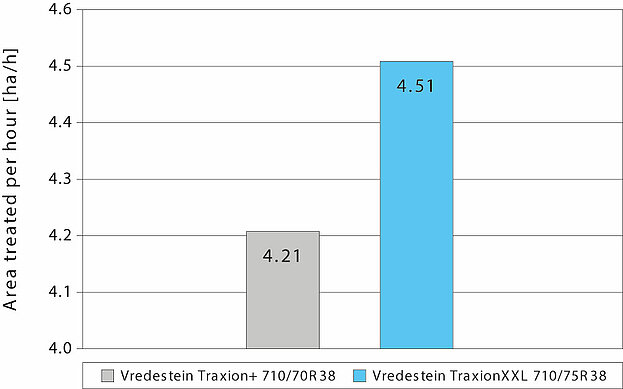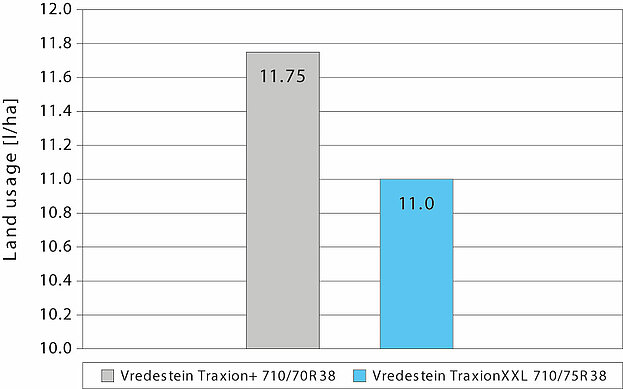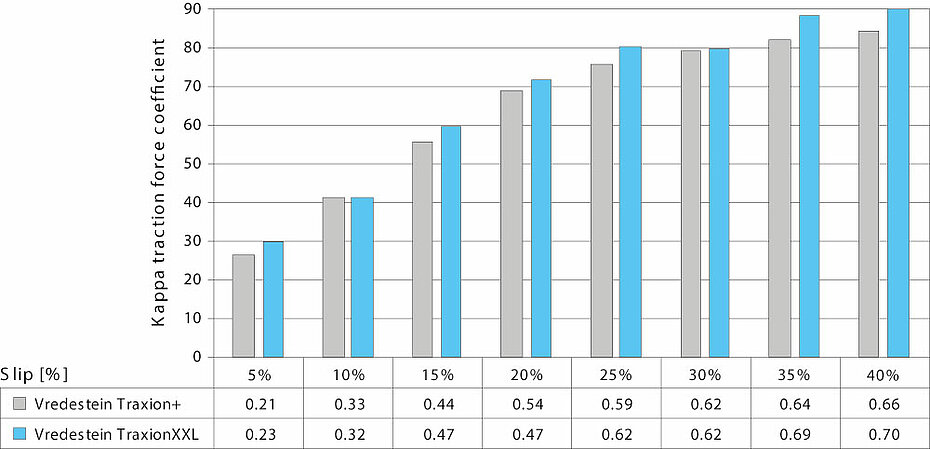Vredestein Traxxion XXL Agricultural tyres for tractors
Efficiency analysis in the new 710/75R38 size
A "DLG Approved for single criteria" test mark is awarded to agricultural engineering products, which have successfully passed a DLG smaller-scope usability test based on independent, recognised criteria.
The tests serve to highlight particular innovations and key criteria in the test object. The test may include criteria from the DLG testing framework for overall tests or may focus on other determining features and properties of the test object. The minimum requirements, the test conditions and procedures and the assessment criteria for the test results are determined in agreement with a group of DLG experts. They equate to the accepted rules of engineering and scientific and agricultural expertise and requirements. A successful test concludes with the publication of a test report and the award of the test label, which is valid for five years from the date of award.
The "Efficiency analysis in the new 710/75R38 size" test series includes tests on the efficiency of agricultural tractor tyres in field work under constant speed conditions and the determination of the maximum possible traction forces. The measurements were carried out on the Vredestein TraxionXXL tyre from the wide base tyre segment in the following sizes: 600/70R28 on the front axle and 710/75R38 on the rear axle. For the purpose of comparing the measurement results a further tyre combination using the Traxion+ tyre in sizes 600/65R28 on the front axle and 710/70R38 on the rear axle was tested.
The particular focus here was on the new rear tyres, which with their cross-section of 75 % of the tyre width, should offer an alternative to the standard 710/70R38 size. The resulting external diameter of the TraxionXXL is 7 cm more than the710/70R38, but 6 cm less than the 710/70R42. It thus fills the recess, which means that the maximum possible external diameter can be used on many tractors, without raising the cabin. In addition, in this case the increased load index, compared with both standard versions offers potential for boosting efficiency in field work, because the tyre air pressure can be reduced at the same wheel load. The TraxionXXL tyre sizes can always be mounted on the front and rear axles on the same sizes of wheel rim as those of the reference tyres.
Assessment – Brief Summary
In the "kappa/slip ratio" category, in comparison with the Traxion+, the larger TraxionXXL clearly behaves better, particularly in the lower slip ranges, with respect to the resulting traction force.
This effect is also positively noticeable for specific fuel consumption at constant speed conditions, so that an improvement of slightly less than 7.5 % can be achieved here. As anticipated, the area treated per hour also comes out approx. 7.5 % better than with the reference combination.
Table 1: Overview of results
| Test characteristic | Evaluation* |
|---|---|
| Kappa/slip ratio | + + |
| Specific fuel consumption | + + |
| Area treated per hour | + + |
The Product
Vredestein TraxionXXL
Description and Technical Details:
Technical information and data are available on the manufacturer's home page.
The Method
The sets of tyres to be tested were first of all mounted on the test vehicle, in this case a Claas Axion 850 C-Matic with continuously variable transmission. This was used as the towing vehicle. The load was simulated by means of a Claas Axion 930 C-Matic, also with continuously variable transmission. The two tractors were connected by a steel cable with integrated traction load cell. In addition, a Peiseler wheel was attached to the drawbar of the towing tractor. This provided the actual driving speed across the ground during the test. The wheel slip was determined from the measurement of the towing tractor's wheel speed and the rolling circumference of the tested tyres. The fuel consumption was recorded using a volumetric measurement system on the towing vehicle.
The test sequence was identical for both sets of tyres. In the first sub-test, the fuel consumption was determined with a constant speed setting on the towing vehicle's cruise control, as well as a constant traction load from the braking vehicle. This was based on load data measured on a cultivator during standard stubble cultivation in the field.
In the second sub-test, the aim was to calculate the kappa/slip curve, in other words the maximum traction as a function of slip conditions under the given ground conditions. For this purpose a constant speed was set on the towing vehicle and the traction requirement was continuously increased via the braking vehicle up to a wheel slip of 40 %.
With respect to moisture, the prevailing ground conditions at the time of the test were recorded by random sampling over the whole test field. Since all the units under test were new sets of tyres these were run in prior to the start of the test using a uniform procedure. This guaranteed equality in the surface area of the tread lugs for all the tyres.
In order to ensure statistical validity, all the measurements carried out in connection with this test were repeated at least three times.
Table 2: Test details
| Vredestein | Vredestein | |||
|---|---|---|---|---|
| FA | RA | FA | RA | |
| Test combination | Traxion+ | Traxion+ | TraxionXXL | TraxionXXL |
| Size | 600/65R28 | 710/70R38 | 600/70R28 | 710/75R38 |
| Load index | 154D | 171D | 157D | 174D |
| External diameter | 1480 | 1930 | 1540 | 2000 |
| Average tread depth across tyre width [mm] | 60 | 65 | 58 | 62 |
| Number of tread lugs | 18 | 20 | 19 | 19 |
| Load per axle test vehicle field [kg] | 5750 | 7050 | 5750 | 7100 |
| Max. load capacity according to manufacturer [kg] | 2935 | 4025 | 2970 | 4250 |
| Test pressure field | 1,1 | 0,6 | 0,8 | 0,6 |
| Offset in test pressure [%] | 1,39 | 2,73 | ||
The Test Results in Detail
n the first sub-test the specific fuel consumptions shown in Figure 4 were measured with an approximately constant traction requirement of approx. 50 kN. This implies that according to the work done under the test conditions the fuel requirement for the TraxionXXL was clearly better in comparison with the Traxion+.
Based on the boundary conditions for the reference attachments, which were taken as a basis for the tractor settings, in this case a cultivator with known working width and depth, the area in hectares worked per hour was calculated. The results are shown in Figure 5.
This shows clear differences between the two test candidates of approx. 6 %. This equates to a difference in area treated per hour of approximately 0.3 ha. As a consequence of the different slip conditions and the different offset conditions, the resulting working speeds had an impact on this result.
Based on the efficiency the absolute fuel consumption and the land usage can be calculated. This can be seen in Figure 6. Here it becomes clear once more that for the same work input the TraxionXXL is able to achieve a fuel saving of approx. 6 % in comparison with the Traxion+.
In the measurements of the kappa/slip ratio in Figure 7 we are concerned with calculating the transferable traction force in relation to the total tractor weight used. This relation is shown by the kappa traction force coefficient without unit as a function of slip. This delivers a statement for practical purposes as to how great a portion of the total weight of the vehicle can be converted to traction force in the same slip conditions.
The results for both sets of tyres have been shown in scaled format in Figure 7. From this it can be deduced that the TraxionXXL is better able to convert wheel load into traction force. Furthermore, from these results it is possible to read that under the given soil conditions and at the same requirement for traction force the TraxionXXL produces less tyre slip and therefore fewer losses. Because of the correlation between reduced slip and the consequent increased working speed the area treated per hour and thus the efficiency of the use of fuel are also positively affected.
Summary
With regard to efficiency during the simulated traction work, the tested tyre combination of the Vredestein TraxionXXL with 600/70R28 on the front axle and 710/75R38 on the rear axle clearly shows its advantages over the Vredestein Traxion+ with 600/65R28 on the front axle and 710/70R38 on the rear axle. In this area it achieves the highest traction forces at the same slip levels.
This of course has an impact on the measurements of the specific fuel consumption. The differences lie in the range of 23 g/kWh. This equates to some 6 % in comparison with the Traxion+ under the given conditions and with the use of the test tractor described.
Of course, this also has an impact with respect to the area treated per hour. As a consequence of the increased footprint due to the greater tyre cross-section the slip level is simply reduced at the same traction force. Of course, this is then reflected in the distance covered. This can be seen as an advantage for relatively small areas to be treated.
All in all, it is apparent that the Vredestein TraxionXXL definitely represents an alternative to the standard tyre sizes, where it is desirable to utilise the possibilities of using the 710 tyre size in combination with a 38-inch wheel rim. The increased tyre cross-section produced by the combination of 600/70R28 on the front axle and 710/75R38 on the rear axle means that more efficiency can be obtained from the tyres than in the case of the reference size for the Traxion+. The additional change in wheel rim size from 38 inches to 42 inches, if at all possible, is no longer necessary here and it should normally be possible to fit the tyres to the tractor without modifying the position of the cabin.
A slight modification in the rolling circumferences also changes only slightly the resulting lead in comparison with both tyre combinations tested. Therefore there is no necessity to adjust the transmission.
Manufacturer and declarant
Apollo Vredestein B.V.
P.O. Box 27
7500 AA Enschede
The Netherlands
Kontakt:
www.apollovredestein.com
Test Execution
The DLG Test Center
for Technology and Farm Inputs,
Max-Eyth-Weg 1,
D-64823 Groß-Umstadt
Field
Automotive engineering
Project Manager
Dipl.-Ing. Andreas Ai
Test Engineer
Dipl.-Ing.(FH) Niels Conradi *
*Reporting Engineer
Contact
DLG TestService GmbH - Groß-Umstadt location • Max-Eyth-Weg 1 64823 Groß-Umstadt Germany • Tel.: +49(0)69 24 788-611 • tech@DLG.org

